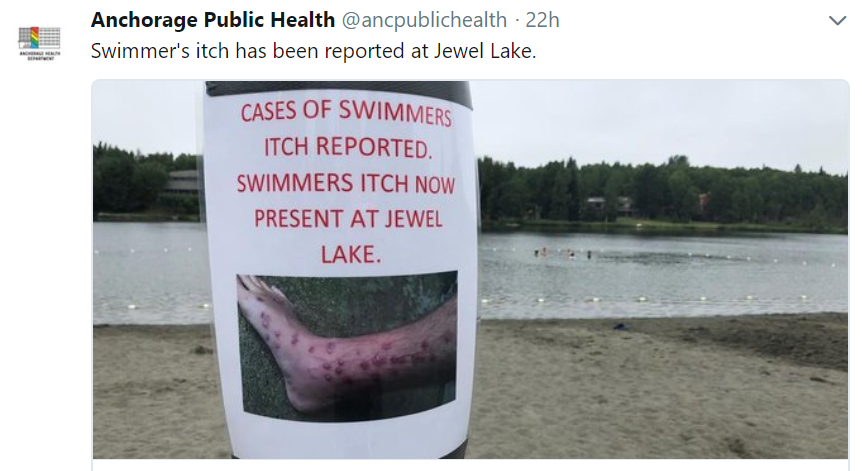
Mayo Clinic also suggests wearing plenty of water resistant sunscreen to protect your skin from the parasites (and UV rays, of course). You can wash away the parasites before they have a chance to get into your skin. If you are swimming or wading in shallow waters, avoid marshy areas and rinse off in the shower when you get out. Bring a life jacket if you're not a strong swimmer. The parasites live in shallow areas, so one easy way to avoid infection is to go out to deeper waters. Because the parasite's life cycle is so short, a clear area can become infected quickly and vice versa. However, there are things you can do to reduce your risk. It can be difficult to tell if an area is infected with swimmer's itch. You can read more about chiggers here and swimmer's itch here. The parasite that causes swimmer's itch is actually a tiny worm. It usually resembles a raised rash, accompanied by colored bumps or acne. They also cause itchy bumps on your skin. Cercarial dermatitis, also known as Swimmer’s Itch, is named after the cercariae parasite that infects the human skin, causing an allergic reaction. However, chiggers are tiny earthbound mites that live amidst grass and weeds. The symptoms often start while the person is still in the. They get trapped between the skin and the swimwear, wetsuit, surfboard, or any other object causing an itchy burning skin rash on areas covered by clothing.

Swimmer's itch is often incorrectly referred to as chiggers. The parasites are sometimes found in water such as lakes, rivers, and the ocean. This is an itchy rash that occurs after swimming in the ocean and being exposed to jellyfish-like larvae. If you create an open wound, that could get infected and cause bigger issues. The bumps are generally harmless and will heal in a few days. People aren't suitable hosts, so the parasites quickly die and leave humans with the itchy rash we know as swimmer's itch. However, the microscopic critters occasionally get lost and accidentally burrow into an unsuspecting human. The parasites eventually seek a more suitable host in birds, completing the life cycle. These parasites live in birds, like ducks and geese, and the parasite's eggs enter the water through a bird's feces. (Yuck!)įrom there, the eggs hatch and larvae find a new host: snails. Swimmer’s itch (cercarial dermatitis) is a temporary, non-contagious itchy rash that appears on your skin and is caused by a certain parasite found in fresh water (lake or pond water) or salt water (ocean water). Here's what you need to know to protect your skin (and sanity) from those dreaded itchy bumps.Ĭercarial dermatitis, the technical name for swimmer's itch, is actually an allergic reaction to some microscopic parasites.


Have you ever gone swimming in a lake only to break out a few hours later with itchy bumps all over your legs and toes? That's swimmer's itch, and it can really ruin beach trips the same way mosquitos mess up camping trips.


 0 kommentar(er)
0 kommentar(er)
